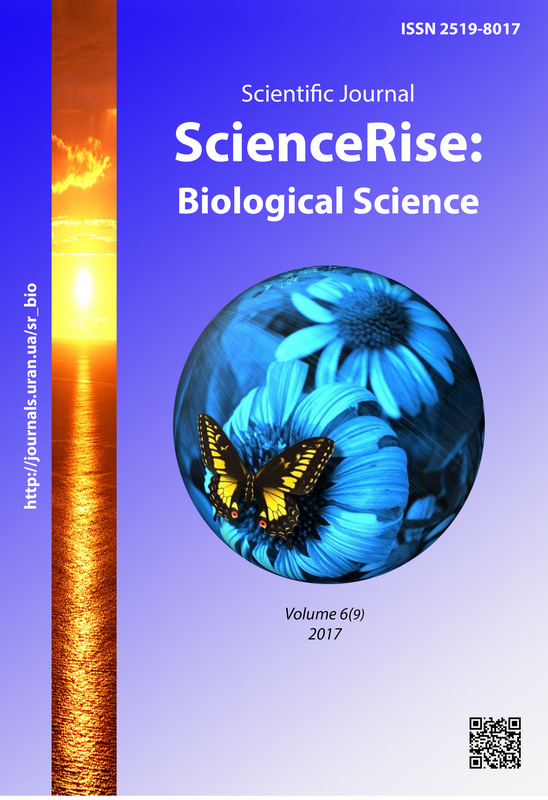Fibrinogen and prothrombin blood content under ischemic stroke complicated by type 2 diabetes mellitus
DOI:
https://doi.org/10.15587/2519-8025.2017.119831Keywords:
ischemic stroke, type 2 diabetes mellitus, fibrinogen, prothrombinAbstract
The article is dedicated to evaluation of general clinical and some hemostatic parameters (fibrinogen, soluble fibrin monomeric complexes and prothrombin content) of patients with ischemic stroke under presence or absence of type2 diabetes mellitus. It has been established that diabetes mellitus patients with ischemic stroke are more likely to have hyperlipidemia, peripheral vascular disease and high body mass index. The conducted research has established the statistically significant changes of fibrinogen and soluble fibrin monomer complexes (SFMC) levels under both investigated pathologies (ischemic stroke and ischemic stroke complicated by insulin-independent diabetes mellitus). SFMC, the early marker of thrombophilia, was significantly higher compared to the reference values in case of stroke as well as stroke with diabetes. It was established that fibrinogen indexes were higher under IS with DM, whereas SFMC had more deviated meanings comparing with the control parameters under ischemic stroke alone. The higher SFMC level in acute phase of stroke independently of diabetes present was a statistically confirmed predictor of mortality.
Nevertheless statistically significant differences of fibrinogen and SFMC levels in patients with ischemic stroke and IS+DMwere not detected and there were no differences of protrombin content neither comparing with the control nor between the studied pathologies. The obtained results have shown that ischemic stroke with and without type 2 diabetes mellitus are characterized by similar changes of the investigated hemostasis parameters
References
- The top 10 causes of death. World Health Organization. Available at: http://who.int/mediacentre/factsheets/fs310/en/
- Chepelevska, L. A., Lyubinets, O. V. (2008). Dynamika i struktura smertnosti naselennya Ukrainy vid zovnishnih prychyn smerti [Dynamics and structure of Ukrainian population mortality from external causes of death]. Bulletin of social hygiene and health care organization, 2, 4–9.
- Dejong, G., Vanraak, L., Kessels, F., Lodder, J. (2003). Stroke subtype and mortalitya follow-up study in 998 patients with a first cerebral infarct. Journal of Clinical Epidemiology, 56 (3), 262–268. doi: 10.1016/s0895-4356(02)00572-3
- Antonova, I. V. (2004). Saharnyi diabet i narushenia mozgovogo krovoobrashenia [Diabetes mellitus and cerebral circulation disorders]. Medical news, 7, 43–49.
- Mohort, T. V. (2011). Cerebrovaskulyarnaya patologia pri saharnom diabete [Cerebrovascular pathology in diabetes mellitus]. Medical news, 6, 15–18.
- Tokar, A. V., Makogonenko, E. M., Platonova, T. M. (1994). Suchasni metody laboratornoyii diagnostyky vnutrishnovennogo microzsidannnya krovi [Modern methods of intravenous microcoagulation laboratory diagnostic]. Kyiv: Maccom, 22.
- Zaichko, N. V., Chernyshenko, T. M., Platonova, T. M., Volkov, G. L. (2006). Vplyv rozchynnoho fibrynu na protsesy zsidannia krovi ta ahrehatsii trombotsytiv [Іnfluence of soluble fibrin on the blood coagulation process and platelets aggregation]. Ukr. Biochem. J., 78, 118–123.
- Vazquez, G., Duval, S., Jacobs, D. R., Silventoinen, K. (2007). Comparison of Body Mass Index, Waist Circumference, and Waist/Hip Ratio in Predicting Incident Diabetes: A Meta-Analysis. Epidemiologic Reviews, 29 (1), 115–128. doi: 10.1093/epirev/mxm008
- Karim, F., Akter, Q. S., Jahan, S., Khanom, A., Haque, S., Yeasmin, T. et. al. (2015). Coagulation Impairment in Type 2 Diabetes Mellitus. Journal of Bangladesh Society of Physiologist, 10 (1), 26. doi: 10.3329/jbsp.v10i1.24614
- Danesh, J., Lewington, S., Thompson, S. G. et. al. (2005). Plasma fibrinogen level and the risk of major cardiovascular diseases and nonvascular mortality: an individual participant meta-analysis. JAMA, 294 (14), 1799–1809. doi: 10.1001/jama.294.14.1799
Downloads
Published
How to Cite
Issue
Section
License
Copyright (c) 2017 Olha Kravchenko, Maria Tymoshenko, Tetyana Tsarenko

This work is licensed under a Creative Commons Attribution 4.0 International License.
Our journal abides by the Creative Commons CC BY copyright rights and permissions for open access journals.
Authors, who are published in this journal, agree to the following conditions:
1. The authors reserve the right to authorship of the work and pass the first publication right of this work to the journal under the terms of a Creative Commons CC BY, which allows others to freely distribute the published research with the obligatory reference to the authors of the original work and the first publication of the work in this journal.
2. The authors have the right to conclude separate supplement agreements that relate to non-exclusive work distribution in the form in which it has been published by the journal (for example, to upload the work to the online storage of the journal or publish it as part of a monograph), provided that the reference to the first publication of the work in this journal is included.









